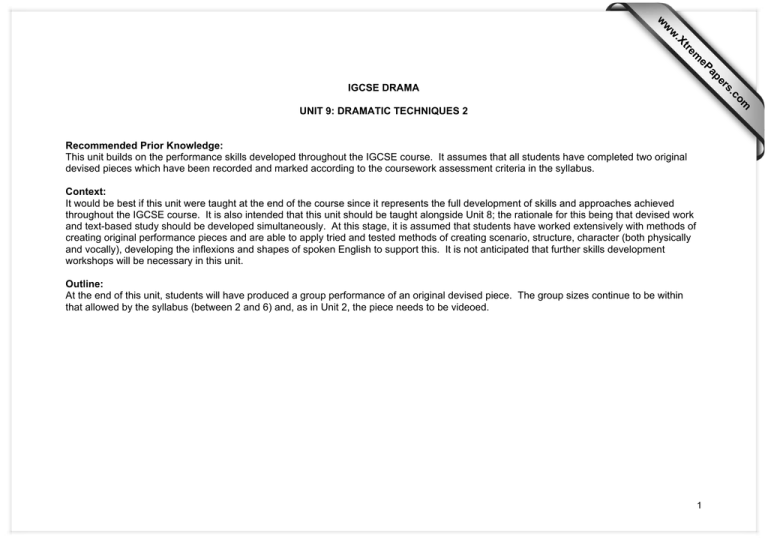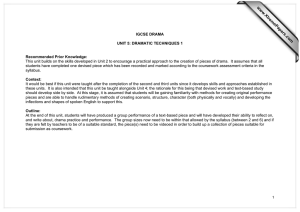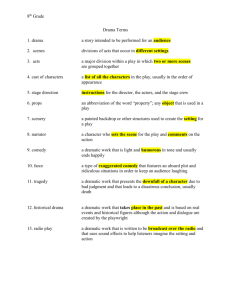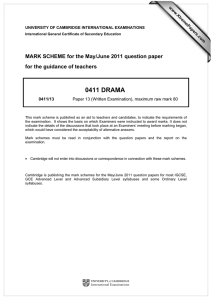www.XtremePapers.com
advertisement

s er ap eP m e tr .X w w w om .c IGCSE DRAMA UNIT 9: DRAMATIC TECHNIQUES 2 Recommended Prior Knowledge: This unit builds on the performance skills developed throughout the IGCSE course. It assumes that all students have completed two original devised pieces which have been recorded and marked according to the coursework assessment criteria in the syllabus. Context: It would be best if this unit were taught at the end of the course since it represents the full development of skills and approaches achieved throughout the IGCSE course. It is also intended that this unit should be taught alongside Unit 8; the rationale for this being that devised work and text-based study should be developed simultaneously. At this stage, it is assumed that students have worked extensively with methods of creating original performance pieces and are able to apply tried and tested methods of creating scenario, structure, character (both physically and vocally), developing the inflexions and shapes of spoken English to support this. It is not anticipated that further skills development workshops will be necessary in this unit. Outline: At the end of this unit, students will have produced a group performance of an original devised piece. The group sizes continue to be within that allowed by the syllabus (between 2 and 6) and, as in Unit 2, the piece needs to be videoed. 1 Learning Outcomes 1 Review of devised work in Unit 5 Suggested Teaching Activities The original devised pieces performed in Unit 5 should be reviewed and evaluated so that students can make a judgement as to how successful they were in: • • • • • • 2 Demonstrate skills in interpreting a piece of dramatic text establishing a clear dramatic intention for each piece creating a scenario and structure that will enable this to be realised creating credible characters, dialogue and use of physical space clarity of diction and articulation the pacing and inflections of spoken English the relationship between spoken word, facial gesture and bodily posture. Resources For sample and catalogue of resources http://www.dramaworks.co.uk/devskills.html Fleming, M. (2001). Teaching Drama in Primary and Secondary Schools: an Integrated Approach. David Fulton: London Work in groups to devise an original piece of drama based on a style chosen from the list in the syllabus but different from those chosen for Unit 5. The length of the piece should be no more than 15 minutes in total. An audience should be invited to the performance of the piece. The options in the 2007 syllabus are as follows: Dramatic techniques: • documentary drama • physical theatre • a piece of satire • musical theatre • entertainment • comedy. 2 Learning Outcomes Suggested Teaching Activities Resources Issues: • a social issue • a political issue. Extra-dramatic stimuli: • a picture • a poem • a photograph • an event in the history of your own country. Students should undertake thorough research into the style they are working in and understand the dramatic conventions associated with it. 3 Understanding the performance process and develop skills in writing about it Students practise short answer questions such as those found in Section A of Paper 1 to allow them an opportunity to reflect on the way they have approached the work. In devised work they should at all times be aware of the impact they wish to make on their audience. They should take an integrated approach to the creation of drama and consider not just the function of the actors but also that of Costume, Set and Lighting Designer as well as the way in which the Director might wish to bring out aspects of the play within a given performance space. 3





